#cucuteni
Text

Fibonacci Numbers in Cucuteni Culture: did the people of the Cucuteni six or seven millennia ago manage to estimate the complexity of ploughing duties, along with sowing and reaping, in story-points which were based upon Fibonacci numbers?
#history#historyfiles#Cucuteni#old europe#neolithic#neolithic farmers#romania#ukraine#fibonacci#new stone age
4 notes
·
View notes
Text

Cucuteni Figurine
Romanian Neolithic
circa 5,000 bce
https://www.archaeology.org/issues/109-1311/features/1349-cucuteni-figurine-romania-neolithic
15 notes
·
View notes
Text
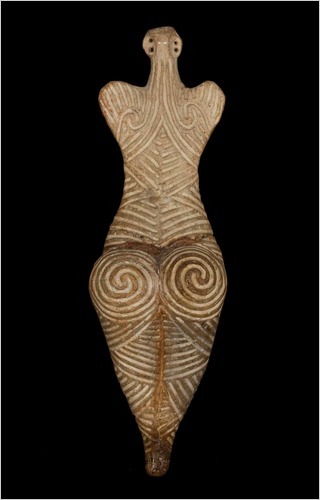
Goddess figurine (4050–3900 BC), Romania
#goddess#Romania#Cucuteni Trypillia culture#Cucuteni Trypillia#art#Miss Cromwell#Stone Age#neolithic#ancient history#figurine#matriarchy
100 notes
·
View notes
Text

“Cucuteni Trypillian Goddess"
article source
Cucuteni-Trypillian:
The Cucuteni-Trypillian culture, also known as Cucuteni culture (Romania) or Trypillian culture (Ukraine), is a Neolithic archaeological culture which existed from approximately 4800 to 3000 BC, from the Carpathian Mountains to Moldova and Ukraine, encompassing an area of more than 35.000 square km.
#neolithic europe#eastern europe#cucuteni trypillian goddess#statuary#ukraine#romania#Cucuteni-Trypillian culture#Cucuteni culture#Trypillian culture
125 notes
·
View notes
Photo
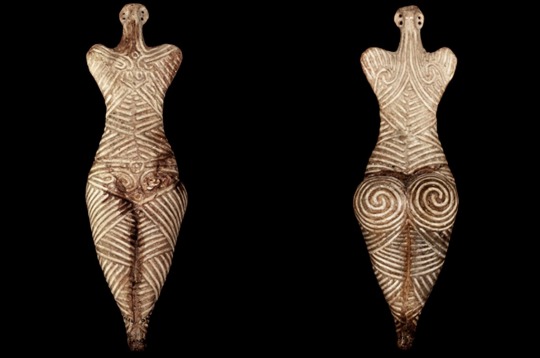
Female figurine (known as the Venus of Draguseni).
Cucuteni Culture -c. 6,500 years old, Neolithic Period.
Fired clay , Dimensions:, 20 cm height.
Found in the hills around Drăguşeni (Botosani) northeast Romania.
Courtesy: Botosani County Museum.
#art#sculpture#female#figurine#venus#draguseni#cucuteni culture#neolithic#archeology#clay#botosani#romania#botosani county museum
569 notes
·
View notes
Text
Thinking about her...


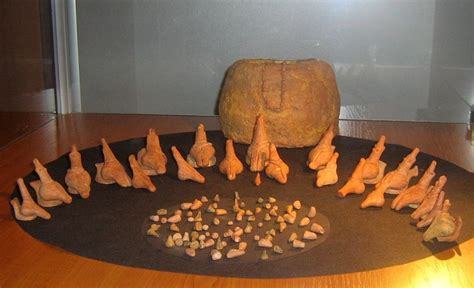


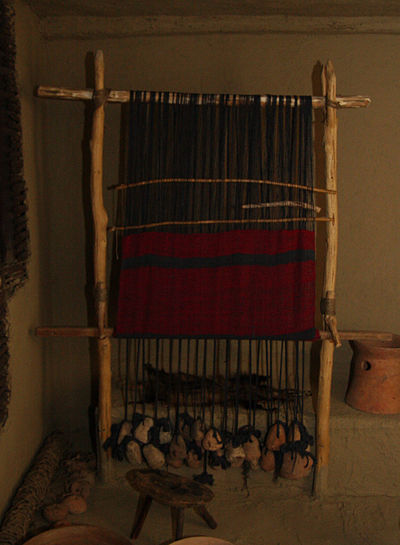

neolithic Ukraine my beloved
9 notes
·
View notes
Text
the cucuteni-trypillia culture were the only people who really had it figured out
no social stratification or division of labor
spend all day doing farm shit or making sculptures of hot women
every 70 years burn your entire city to the ground and rebuild it all from scratch
#cucuteni-trypillian posting#neolithic posting#fuck the greeks and romans and what have you. the cucuteni-trypillia culture is the only ancient people i look up to
2 notes
·
View notes
Text
Spotlight Art – History – Terracotta Sculpture – Cucuteni Figurine – Romania
Cucuteni Figurine – Romania
The Cucuteni Figurine an early Romanian terracotta work from the Neolithic Cucuteni Culture, dating from c. 4500 – 3000 BCE National – Museum of Romanian History, Bucharest.
The Cucuteni culture was was a society of small-scale agriculturalists and shared many characteristics of the BalkanNeolithic cultures.
Most Cucuteni settlements produced groups of human…

View On WordPress
#Art#Art Music Photography Poetry Quotations#Cucuteni Culture#Female Statuette#Goff James#Goff James Art Music Photography Poetry Quotations#goffjamesart#Haiku#History#Poem#Poetry#Romania#Sculpture#Senryū
2 notes
·
View notes
Text
Cucuteni–Trypillia culture
The Cucuteni–Trypillia culture, also known as the Cucuteni culture or the Trypillia culture, is a Neolithic–Chalcolithic archaeological culture (c. 5500 to 2750 BC) of Southeast Europe. It extended from the Carpathian Mountains to the Dniester and Dnieper regions, centered on modern-day Moldova and covering substantial parts of western Ukraine and northeastern Romania, encompassing an area of 350,000 km2 (140,000 sq mi), with a diameter of 500 km (300 mi; roughly from Kyiv in the northeast to Brașov in the southwest). Wikipedia
#phys.org#Ukraina#Moldova#Cucuteni–Trypillia culture#Trypillia culture#Trypillia settlements#Europe#Mega sites#Mega settlement#Vegetables#Agriculture#farmers#farming#Neolithic technology
0 notes
Text
my pinterest moodboard featuring the rustic vibes of the Gumelniţa-Sălcuţa-Petreşti-Ariuşd-Cucuteni-Tripol’ye archaeological complex
34 notes
·
View notes
Text
Absolutely delighted to hear there's a pottery festival in Cucuteni every year. It's like, people there must love pottery. They've been making pots since the neolithic and haven't stopped.
64 notes
·
View notes
Text
My next post in support of Ukraine is:
Next site, the Kyiv Regional Museum of Archaeology in Trypillia, Ukraine, about 25 miles from the city of Kyiv. The town sits on a site of the Cucuteni-Trypillian Culture, an ancient culture that lived in Ukraine, Moldova, & Romania from 5500 to 2750 BC.
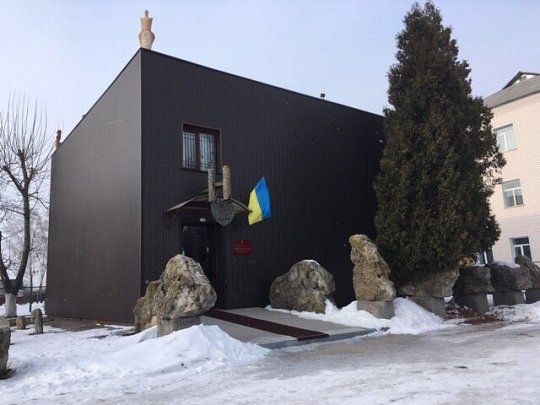


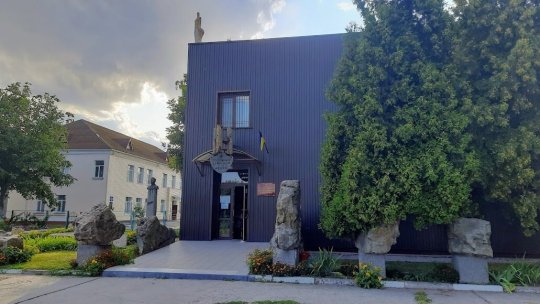
Here's more info on the Cucuteni-Trypillian Culture.
#StandWithUkraine
#СлаваУкраїні
#Героямслава 🇺🇦🌻
14 notes
·
View notes
Text

cucuteni-trypillian goddess
when cultural art is a mirror from past to present. here the idealized representation of the self is a love letter to future generations. she said stripes are in fashion... now and forever!
10 notes
·
View notes
Text
Time Travel Question 9: Ancient History II and Earlier
These Questions are the result of suggestions from the previous iteration.
This category is for suggestions made too late to fall into the correct grouping.
Please add new suggestions for this category below if you have them for future consideration.
#Trilobites#Time Travel#Malapa Caves#Uffington Chalk Horse#Moche Culture#Nazca Lines Made#Homo Naledi#Cucuteni–Trypillia Culture#Scythians#Yayoi Culture
32 notes
·
View notes
Text
ARCHAEOLOGISTS FROM THE BORSCHIVSKYY LOCAL HISTORY MUSEUM HAVE UNCOVERED A RITUAL HOARD IN VERTEBA CAVE IN THE TERNOPIL PROVINCE, UKRAINE.
The cave contains up to 8km’s of passageways which was used as a Sanctuary by the Cucuteni-Trypillia Culture.
The Cucuteni-Trypillia Culture emerged during the Neolithic–Chalcolithic (5500 to 2750 BC) in Eastern Europe, extending from the Carpathian Mountains to the Dniester and Dnieper regions, centred on modern-day Moldova, and covering substantial parts of western Ukraine and northeastern Romania.
A mysterious characteristic of the culture was the regular dismantling or burning of settlements, where each individual dwelling site had a lifespan of approximately 60 to 80 years.
Scholars debate the reason behind the burning of these settlements. Some settlements were reconstructed multiple times on pre-existing habitational levels, maintaining the form and direction of the prior structures.
Some of the settlements, such as Talianki, grew to be as large as the city-states of Sumer in the Fertile Crescent, and these Eastern European settlements predate the Sumerian cities by more than half of a millennium.
Little is known as the religious practices of the Cucuteni-Trypillia Culture, and examples of ceramics discovered are very rare. However, archaeologists excavating in Verteba Cave have uncovered a gigantic clay storage jar containing a white organic material (yet to be analysed).
Near the jar the team noticed a small niche in the cave wall, which upon a closer examination led to the discovery of a ritual hoard consisting of five female “goddess” clay figurines.
Many figurines have been found across Cucuteni-Trypillia sites, but the term “goddess” may not be entirely appropriate for every female anthropomorphic clay figurine. The archaeological evidence indicates that distinct figurines served various functions (such as protection) and therefore not all of them embody a goddess.
The researchers also found jewellery and tools (for pottery production) made of boar teeth, which is relatively unique as the culture’s rituals are normally focused more on domesticated animals like cattle, sheep, goats and dogs. When wild animals were represented, they are usually bears or deer.
Header Image Credit : Mykhailo Sokhatskyi
18 notes
·
View notes
Text
there’s nothing wrong with newness
(reposted, with additions, from Twitter)

I think a lot of neo-paganism would be a lot healthier (and a lot less vulnerable to white supremacist influences) if everyone got more comfortable with the "neo" part of it. There's nothing wrong with creating new traditions, and even being inspired by past ones.
Before I get into what I’m talking about, I want to quote some of a brilliant thread by Dr. Sarah Taber:
looking back through europe's pre/history is really interesting, it's just population replacement after population replacement. there's a REASON we have no idea what the Lascaux cave art is about, for example. The cultures who made that p much disappeared 3+ invasions ago.
some places have very old oral histories: Aboriginal Australians have place-names that clearly refer to different sea levels, Haudenosaunee accounts tell of receding glaciers, etc. Most of Europe doesn't have that! Indo-European traditions are really, really recent.
The oldest oral tradition we got is fairy tales. The oldest one (the smith & the devil) goes back ~4K years. Sounds super old! Until you contrast it to Haudenosaunee receding-glacier histories (10-15K yrs) or Aboriginal Australian place names (up to 20-40K years old).
We're still learning a lot about what Indo-European society was all about & it's really hard to do w/out running face-first into a lot of Race Science but it's the base layer for the vast majority of Europe's "traditional cultures." 1 single invasion, relatively recent.
It's why Europe has way less linguistic diversity than p much anywhere else in the world! Very recent cultural resurfacing on most of the continent! And the folks who did it were militarized, hierarchical, & focused on male-owned property. That's what we're working with lol...
Europe's past has cool stuff like Stonehenge, Cucuteni-Trypillia longhouse culture, cave art, etc! And it's very important to remember they have basically nothing to do w the people who live there now. : / We have just some of their genes & ~none of their stories.
We can't "reclaim" those cultures bc they aren't our ancestors in any sense of a continuing tradition. Could we try? Sure! But at that point we're just making shit up & appropriating someone else's culture. And they're not even there to correct you when you get it wrong.
There’s a reason that there’s so much overlap between people interested in “reclaiming” pre-Christian European traditions and white supremacists/neo-Nazis.
anyway this has been a super long text wall but tl;dr there's a REASON fascination with pre-medieval Europe is associated with militant dudes who wanna wipe out other people. that's what our ancestors were up to going WAY back.
Once you start "reconnecting" that's the first thing you learn. : / It ain't all maypoles & herbs & shit. so like, associating pre-christian Europe with cultures of invasion & genocide is an accurate understanding of the situation. I shan't make fun of ppl for seeing it lol
I’ll reiterate again: there’s nothing wrong with your neopaganism leaning into the neo part.
A note about appropriation
It’s really trendy right now to claim that European Christians “appropriated” pre-Christian European traditions, and wow, no.
It really trivializes actual appropriation by colonizing cultures from the cultures that they occupy, oppress, and even genocide to equate the two.
The stuff that usually gets cited as “appropriation” of European pagan ritual is stuff like Christmas trees, Saturnalia -> Christmas, etc.
The thing is, it was not appropriation for European peoples to continue to practice their own traditions after converting to Christianity. A pagan Roman continuing to engage in Roman Saturnalia rituals after becoming a Christian is not appropriating anything. A Germanic pagan continuing to engage in winter traditions around decorating trees after becoming a Germanic Christian (which, incidentally, is first really documented in the 16th century, long after Europe was thoroughly Christianized, but for the sake of argument...) is not appropriating anything. You can’t appropriate from yourself.
(And no, most non-European Christians also aren’t “appropriating” European traditions by practicing them as Christian traditions--when you’ve been colonized, you are not “appropriating” anything by assimilating into the colonizing culture. Power relations matter.)
That is very much not the same as white people of European Christian descent practicing elements of Native, Indigenous, Aboriginal, Hindu, Jewish, etc. traditions when the people from those cultures A) have not invited them to do so, B) are often penalized for practicing their own traditions, and C) practice those traditions within the context of an entire culture, unlike the outsiders picking and choosing elements like they’re digging through a toybox.
Moreover, as Dr. Taber notes, there’s no direct link to those cultures to use to “reclaim” their traditions...
...except, for “newer” (as in pre-medieval) traditions that are preserved through Christianity. Where elements of those pre-Christian European traditions were preserved, they were almost always preserved by Christian Europeans. I’m no fan of Christianity, but European Christians actually have as much--if not more--of a claim to legitimacy in practicing those traditions than neo-pagans.
And not facing up to this leads a lot of neo-pagans (and even non-neo-pagan atheists from Christian backgrounds who like complaining about how Christians appropriated all kinds of European pagan traditions) very close to some white supremacist/Nazi narratives.
Because it usually turns on a characterization of Christianity as a foreign religion forced on innocent European pagans. (Never mind that the Christianization of Europe wasn’t anywhere near universally violent or coercive--Christians tended to save their swordpoint conversions for other continents. That, however, is a whole different post.)
So at that point, you have to ask “foreign to where?” Christianity as we know it developed into an actual religion in Roman-controlled areas. So it wasn’t exactly “foreign” to Europe. It was home-grown.
And the idea of Christianity as a religion “foreign” to Europe, forced upon Europeans by... whom? Other Europeans, actually, but that doesn’t fit the foreigner narrative.
Well, the very easy place to go is that it’s a corrupt, foreign Middle Eastern religion that was forced upon Europeans. And from there, it’s another easy step to This Is The Jews’ Fault. There’s a reason there’s a lot of antisemitic heathenry out there.
(We, for the record, are a non-evangelizing culture with closed practices. We aren’t trying to get you to convert to Judaism. In fact, we traditionally make it hard to convert to Judaism, because we believe y’all can have your own relationship to the Absolute.)
Some ugly history we should talk about
So back to the beginning of this post:
There's nothing wrong with creating new traditions, and even being inspired by past ones.
Like, I think that for the most part, the impetus behind most attempts to create neopagan practices, traditions, communities, etc. are really positive, especially when they're earth-focused. We're killing the planet, and if more people worshiping it helps turn that around, A+.
But like many people with a lot more expertise than me have pointed out (especially Indigenous people), a lot of neopaganism is suuuuuuper appropriative, and a lot of times the appropriation gets hand-waved away or justified by either claiming it's done respectfully or claiming that it's not harmful because, as opposed to Christianity, neopaganism is small and well-intentioned and all that.
Gd hippies, again
Generally, we're not talking about how much of this stuff was started by hippies--whom most contemporary Americans tend to think of as perhaps a bit silly, but not harmful--and the hippies were like POSTER CHILDREN for "the cool things in other cultures should belong to us." Like, they wrapped it up in a lot of Love And Universal Brotherhood language, and I guess since Christianity does the same with its colonialism, everyone was largely like "yup, that must be their motivation, love and peace, yo."
But if you have ever seen a hippie get called on appropriating Native stuff, for example, most of the time the Love And Universal Brotherhood shit goes right out the window and you end up with the Kareniest Karen you ever did see because there's a LOT of colonialism in there.
And also, fuck the Victorians
And what we also don't generally talk about is how much Victorian occultism got filtered through hippie New Age stuff into many forms of modern neopaganism. Like Gardner was inspired by the Rosicrucians and influenced by Crowley. (This might get boring, but I spent a lot of time flirting with neopaganism in college, especially Dianic and Celtic Wicca, and as is my wont with almost everything I get passionately interested in, I rabbitholed HARD on "how did this come to be the way it is?")
Any time I start following a thread through the labyrinth of history and I end up in Victorian occultism, I start to get really, really nervous. Most of the underlying assumptions there are ugly as hell, and the number of things in contemporary society it influenced are myriad and that influence is, often, unacknowledged.
So the Victorians got Very Into Archaeology, and were fascinated by ancient civilizations like those in Egypt (modern writers refer to Victorian "Egyptomania"), the Near East, China, and India. And on one hand, they loved the aesthetics and the sheer ancientness and believed that these cultures had a treasure trove of good things waiting to be "discovered" by white people. On the other hand, they got really insecure, because none of these sophisticated ancient societies were in Europe. (I go into a lot more detail about this in a series of posts about bad archaeology and the Minoans.)
So they became obsessed with discovering some sort of ancient European society, first to rival these civilizations and then to have taught/inspired/built them, and you get things like basically making up a sophisticated Minoan society that "predates" Near Eastern ones. You also get things like Atlantis as the progenitor civilization of every major world civilization, and a lot of similar theories. The descendants of these theories are things like Ancient Aliens conspiracy theories.
They all boil down to "there's no way brown people could have come up with all this tech/civilization/literature/etc. before white people so the explanation is either Ancient White Superpeople or aliens." And at the root of this is trying to prove that if other cultures have stuff white people like, it must rightfully belong to white people now because it must have originally belonged to white people.
And one of the ways that this interacted with Victorian Christianity--that it was made acceptable in a strongly Christian society--was to posit that all ancient civilizations were actually monotheistic. They just worshiped different "faces" of God. So you could be into occultism and invoke Isis and all that shit and still go to your Christian gentlemen’s club.
Fuck the Romantics, too
And I'm not going to go into it here because I already did in the Minoan posts, but parallel to the interaction with Christianity and the assumption of monotheism was interaction with the Romanticism of the time, which resulted in positing some sort of ur-Goddess worship.
None of this, incidentally, was based on actual evidence. The idea that all of Europe once followed one universal, matriarchal goddess religion was a theory that a random judge was like, "hey, this feels like it makes sense to me" and everyone was like "yup, let's run with it." And so they "reconstructed" a lot of pre-Christian religion based mostly on Romanticism and insecurity about advances in European civilization coming from the Near East.
And I could do a whole thread about how this stuff prepped a lot of Victorian Europeans and Americans to listen to the Nazis.
If you're grappling with your feelings of inferiority about how what you consider Civilization mostly came out of the Near East, not Europe, at some point you have to grapple with the role of Christianity in all that.
And the thing is, Christianity is actually NOT a Near Eastern religion (as noted above). It may have gotten started by Jewish followers of a Jewish teacher, but as soon as it actually started becoming a separate religion, it was centered in Rome (both the city and the empire). But if you're attempting to reconstruct European paganism to which you have no direct links (other than, perhaps, some traditions filtered through Christianity) because it was wiped out by Christianity, and you want to feel superior to Middle Easterners, well, the obvious move is to Blame The Jews. So Christianity becomes a Jewish religion forced on Europeans and I guess we'll just be vague about who was doing the forcing so we don't have to treat it as Europeans continuing to beat each other up. From there, it’s a direct line to the Nazis’ “Positive Christianity.”
The “neo-” part is great, actually
To get back to the original point, most neo-pagans are lovely people and I consider them more likely to be fellow travelers than I do most Christians. HOWEVER, insistence that they're continuing ancient European traditions is A) not true, and B) based in some bad shit.
And downplaying the "neo" part of neo-paganism can help create a hospitable environment for white supremacist attitudes and ideas. Again: there's nothing wrong, inferior, or illegitimate about creating new traditions, and being *inspired* by whatever you can learn of older ones.
But even among neo-pagans who don't get seduced by (organized) white supremacist thinking, I do see a lot of attitudes that are kind of similar to those of New Atheists in regard to "organized religion," and Judaism and Islam (generally under the heading of "Abrahamic religion").
(I've done whole threads about how the term "Judeo-Christian" exists almost solely to let Christians erase/co-opt Judaism and be Islamophobic, and I should do one about how "Abrahamic religions" often serves as a cover for displacing anger at Christianity onto Judaism and Islam.)
And here's the thing: adherents of pretty much every belief system in America that is mostly made up of white people have a LOT of deconstruction to do.
Christians need to deconstruct the ways Christianity has animated and benefited from colonialism, white supremacy, antisemitism.
People who've left Christianity need to deconstruct how they still benefit from Christian hegemony and those things.
White Jews need to deconstruct how Jewish whiteness was built on anti-Blackness, and how we often use the conditional nature of Jewish whiteness as a shield against having to grapple with our own internalized white supremacy or acknowledge our white privilege.
I want to return to that "people who leave Christianity" and the deconstruction that needs to happen there, because I think it explains a lot of the parallel attitudes (and vulnerability to white supremacy) in neopagan and New Atheist circles.
Just ceasing to believe in the tenets of Christianity doesn't automatically deconstruct the attitudes, beliefs, assumptions, worldview, etc. instilled by growing up in Christian hegemony.
People who convert to religions like Islam or Judaism or even who marry a Hindu or otherwise join communities of people who are actively engaged with non-Christian traditions that have existed for a long time can get a big boost, I think, in that deconstruction because they're interacting with people who have never been Christian, whose parents were never Christian, whose grandparents were never Christian, and whose practices may have been *influenced* by Christianity but weren't instituted by Christians (or ex-Christians).
If you're leaving Christianity--or at least, a culturally Christian upbringing--and you're not becoming part of an established counter-tradition, I think, it's a lot harder to notice those assumptions and deconstruct them because you aren't getting that in-your-face contrast.
So you get a lot of ex-Christians who very much want to not be Christian anymore but are having to figure out what that means without living in a community that provides established counterexamples, and a lot of times have a lot of anger at Christianity and end up keeping a lot of the supremacist assumptions of Western Christianity and end up displacing some of that anger onto other traditions, advocating for a secularism that hasn't disentangled itself from white Christian norms, etc.
A lot of neopagan communities with which I've interacted are in this weird middle space, where most of the members are ex-Christian and are attempting to construct a counter-tradition, but they're doing it without the framework of an established counter-tradition.
And that's really fucking hard work because you don't have the benefit of a community with hundreds or thousands of years of its own non-Christian thought to counteract normative Christian-based attitudes and assumptions. The danger, I think, is in not recognizing that "reconstructed" traditions that are actually still based on stuff coming out of a Christian, white supremacist society don't actually provide the counter to Christian normativity that you might hope.
Again: Actually building a non-Christian tradition more or less from scratch, deconstructing white supremacist Christian assumptions so you're building on foundation that doesn't contain a lot of timbers that are just Christianity with the serial numbers filed off is really fucking hard work, and mad respect to the people actually doing it. It's much easier to just use what's already been packaged up for you.
I think the good news there is that if you do that deconstruction, and the communities you found and the traditions you start do that work, it's not going to take hundreds or thousands of years to have communities that provide strong, genuine alternatives to Christian hegemony. I know some kids raised in neopagan families that very intentionally do that work (although to be fair, both of those families have one parent who was raised in a non-Christian religion, so maybe they have a head start) who seem to have really internalized it.
But they are really clear on the whole "we're creating something new here" element of it. And I think that's incredibly, incredibly key to their authenticity, their sense of purpose, and their ethics.
And in general, I look at Christians and cultural Christians who aren't practicing, as a Jew, and think "man, you have it easy." But looking at neo-pagans who are actually Doing The Work to build something that's authentic and resistant to fascism, I think "man, I have it easy." (Incidentally, as much as Unitarianism often gets a bad rap for being bland, they've created some beautiful and moving rituals as well and are down with new ritual and I love them for it.)
Anyway, to wrap this up:
Creating new rituals and religious traditions is good, actually
You don't need some sort of unbroken religious history to be legitimate or authentic
It's cool to be inspired by ancient cultures without claiming to be them
Oh, and also:
For members of older non-Christian traditions: it's really really easy to fall into the default of rolling our eyes at the new and I do it a lot intentionally at Christians, because being reminded that there was plenty of Civilization in the world before Jesus is good for them, I think.
But it behooves us to make sure we're careful about when we deploy that.
Like, ESPECIALLY if you have the background of being raised in an old, non-Christian tradition with a strong community, I think being a sounding board to friends who are trying to deconstruct their own internalized Christian hegemony is a way to be an ally. Obviously, it doesn't automatically make anyone an expert on this stuff, but just the sniff-test of "that assumption seems weird to me" can, I think, be helpful.
Make new ritual.
It’s awesome.
(Image credit: Cottonbro Studio)
65 notes
·
View notes